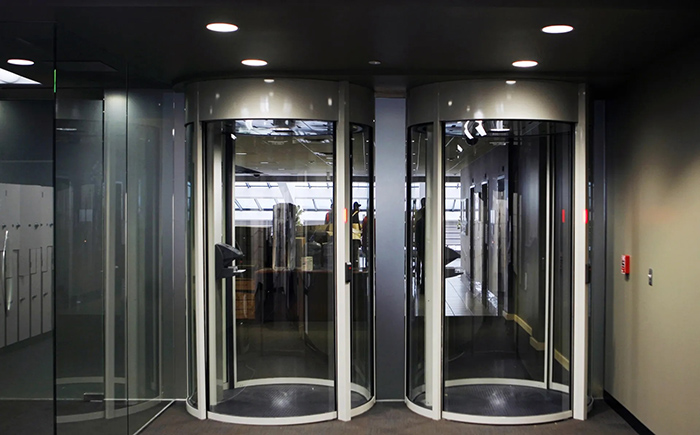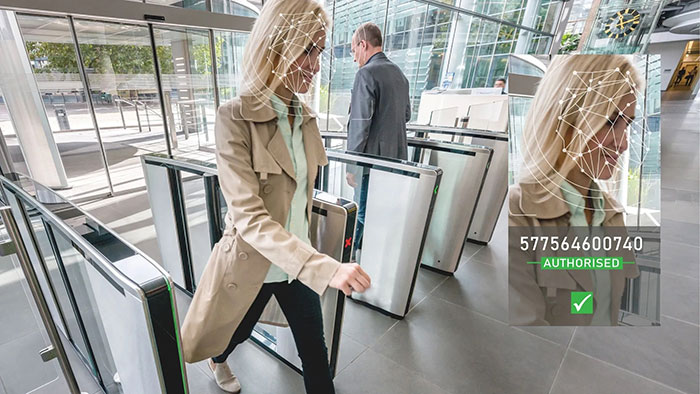In the building and construction industry, it appears clear that artificial intelligence (AI) has the potential to play an increasing role in making exterior and interior entrances more secure.
Many building automation systems, fire systems, intrusion detection technologies, and physical and network access control systems already have AI built into many of their core competencies.
But while AI will be able to help in many security-related tasks, such as discerning people from objects at a facility’s perimeter and interior entrances, detecting attempted piggybacking, spotting and analysing potentially lethal objects and dangerous people, and more, AI does have its limits... it cannot take action to prevent unauthorised human entry or deny the entry of dangerous objects.
Connecting entry manufacturer goals with end user needs
Manufacturers’ goals must align with their end users’ needs when it comes to driving the development of embedded solutions with advanced sensors (cameras, microwave, LIDAR), operational analytics (facial recognition, tracking, pattern recognition), and active response (entry lockout, alert notification) that now prevent or deter risks detected at the entry.
Using third-party solution providers to achieve security entrance + AI integration
Because many security entrances do not have AI built into their technology, integrating intelligence into secured entrances requires a collaborative effort with a third-party solutions provider. Video analytics are increasingly deployed to address use cases such as people detection, piggybacking, dangerous object detection, and facial recognition among other issues relevant to secured entrances. The increased integration of AI providers with traditional security entrance partners has resulted in improvements in:
- Price
- Speed
- Ease of use and usability
- Use of machine learning to improve algorithms over traditional modelling and correlation approaches
- Integration with other systems and sensors
AI works to replace human efforts at the entry
So, what can AI do alone at a secured entrance? Basically, it can replace human effort at tasks that would be tough for people to do reliably: learn behaviours of staff, employees, and contractors; and identify people and monitor them more consistently than operators.
Currently, many security entrances detect tailgaters by using near-infrared sensors – if it appears that two separate objects are breaking through the sensor beams, an alarm is generated. In security revolving doors and portals, near-infrared, ‘time of flight’ technology is paired with optics to create a 3D image of the objects inside the door; algorithms and sampling data are used to determine whether there is one person or two. When these technologies reject a user ‘for no reason’ (for example, a person enters a door with a box of pizza and wears a backpack), that’s known as a ‘false rejection’.
Advanced AI can fill the gap by recognising people (through learned movement patterns and spacing of features) and objects the way humans can, which can bring the false rejection rate to near zero. For example, it could know the difference between any inanimate objects being worn or carried through the entrance vs. living users. It can know intimately the identity of authorised users, regardless of clothing, current weight, hair colour or facial hair, and the process of aging.
AI is a double-edged sword
The use of machine learning as well as deep learning has been used for many years in the ‘Big Data’ world to identify trends and produce metrics regarding human intent. Within the security industry we see a trend by companies to leverage these specific engines to gain greater benefits from access control, video surveillance management, intrusion detection, and tracking systems. Machine learning can be seen as a double-edged sword, because tracking learned behaviour can help define potential vulnerabilities and unmask potential threats; yet it can also lead to privacy and discrimination concerns, especially when intent and analytic detail are not clear.
A layered approach to security entrances
The current best practice for security entrances, particularly in high security applications, is to employ a layered approach.
A layered approach could involve a combination of:
- Full height turnstiles, which are useful at the outer perimeter, because they provide both a visual and a physical deterrent against unauthorised access.
- Speedlanes in the lobby, to prevent tailgating – unauthorised people tailing authorised personnel through security gates – through to the use of alerts and visual recognition features that alert security staff to a potential breach.
- High security portals to protect data server rooms. These portals use biometric scanning and overhead sensors to ensure the credentials of each user. It guarantees each user is alone and is exactly who they say they are. This is the ultimate security frontline – essential for protecting data at its hub.

High security portals that protect facilities like data centres are already using AI to enhance the accuracy of security technologies, and reduce false rejections to near zero
AI can provide enhancements to much of this existing technology. For example, facial recognition software can be integrated into speedlanes, so that instead of each person needing an access card, they can smoothly walk through and be authorised using their face.
The future of AI and security entrances
AI in the form of machine learning and deep learning has become a disruptive technological force in the physical security industry. The push for touchless and frictionless access options will expand the integration of secure entrances with building control systems to help provide additional insight to potential threats and help mitigate them.

Integrating facial recognition into speed gates is one way that security entrances are becoming more advanced, and it’s an area that AI can provide useful enhancements

